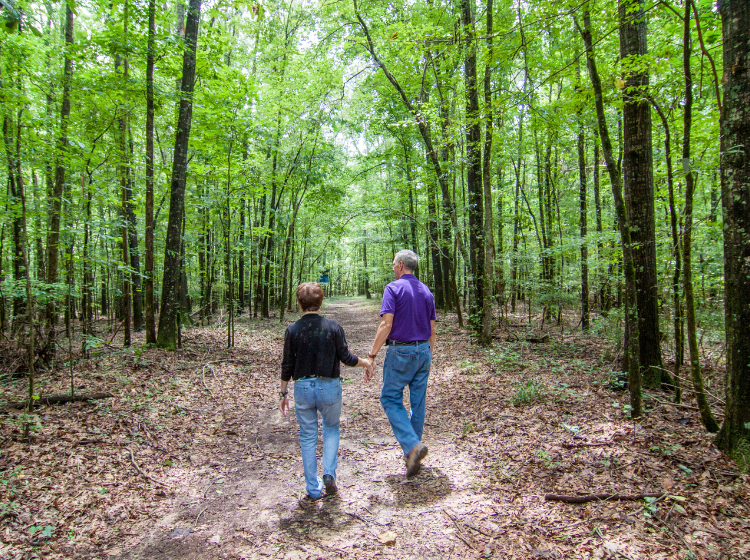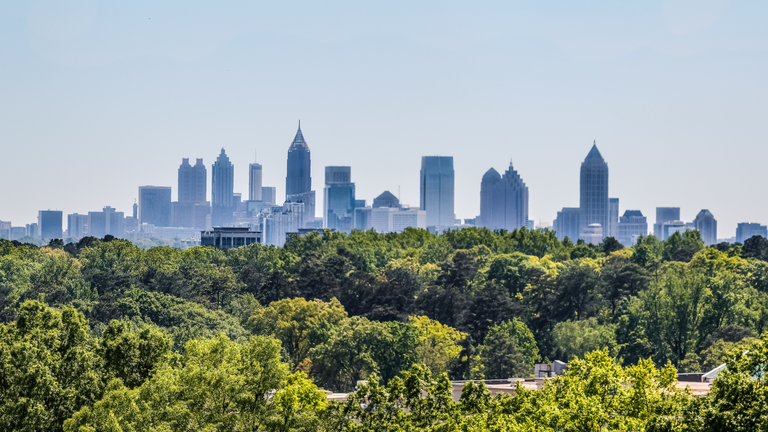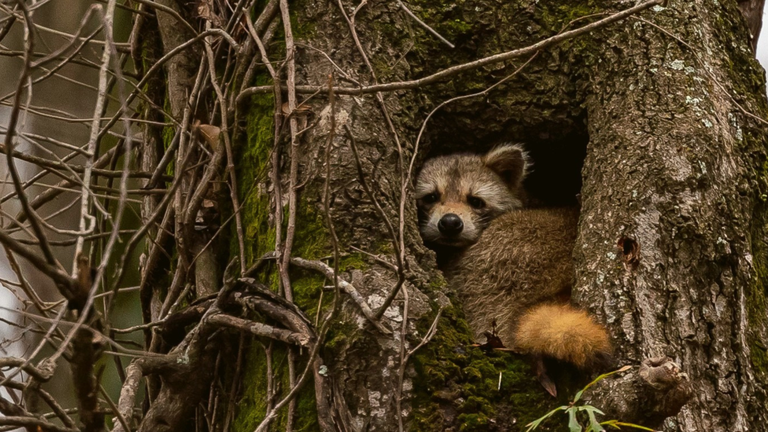Updates & Blog
Healthy Lives Grow on Trees: An International Day of Forests Celebration

Each year on March 21, people across the globe observe the International Day of Forests to “celebrate and raise awareness of the importance of all types of forests.” The United Nations has declared this year’s theme as “Forests and Health” – a concept we at the Southern Group of State Foresters know well!
A growing body of research has demonstrated a clear connection between access to trees and improved human health. The mere presence of trees and forested areas supports human health and wellness in a variety of ways, while providing vital environmental benefits to support all life on Earth. Sustainably managed forests also provide renewable and sustainable wood-based materials for medicines and other products that keep us healthy. Read on to learn five important ways healthy trees make for healthy lives:
1. Mental Health

Exposure to forests and trees helps decrease mental fatigue by relaxing and restoring the mind, while boosting serotonin levels to improve energy and mood. In fact, one study found that being closer to green areas was associated with decreased anxiety and fewer mood disorder treatments in urban environments. Another study demonstrated that exposure to 30% or more total greenspace, specifically tree cover, was associated with lower psychological distress and poor health.
Trees are also beneficial for kids’ mental health. In fact, children who spend time in nature are often more relaxed and attentive, which can improve learning and performance in school.
2. Physical Wellness and Disease Prevention

According to Health.gov, about half of all American adults have one or more preventable chronic diseases, yet nearly 80% of adults are not getting enough aerobic and muscle-strengthening activity, and only about half are getting adequate aerobic physical activity. “This lack of physical activity is linked to approximately $117 billion in annual health care costs and about 10% of premature mortality.”
The presence of green spaces and tree-lined streets infuses communities with an inviting atmosphere proven to successfully motivate people to get active outdoors and maintain a healthier overall lifestyle. Treescapes have also been shown to reduce risk of dying from several common causes of death, including cardiovascular and respiratory diseases, by between 8-12%. Fascinatingly, the odds of hospitalization for heart disease or stroke were also 37% lower among adults in neighborhoods with a variety of trees and greenery.
3. Food and Medicine

According to the United Nations, “nearly one billion people globally depend on harvesting wild food such as herbs, fruits, nuts [and] meat… for nutritious diets.” In addition to the many fruit and nut-bearing trees found in the region, southern forests provide a bounty of healthy foods by way of non-timber forest products, including wild mushrooms, ginseng, ramps and more.
Many of the medicines we rely on today also come from forests, with 25% of all medicinal drugs used in developed countries being plant-based. Moreover, most pharmaceutical pills contain high-purity cellulose, which is largely derived from wood sustainably harvested right here in the U.S. South. High-purity cellulose is used to bind pill contents together, create hard-shell or slow-dissolving coatings for tablets, and as a thickening agent in liquid medicines.
4. Clean Air and Water

The presence of clean and abundant air and water is crucial to the survival of humans and thriving communities. One of the most important services forests provide is helping maintain the carbon balance in the earth’s atmosphere. Healthy, growing trees remove carbon dioxide from the atmosphere, releasing oxygen and storing carbon in their wood.
In the Southeast, more than 44% of the total water supply, or about 98 trillion gallons, comes through state and private forests before it makes its way into waterbodies. Providing more than half of the available water supply for 14 million people, healthy forests that effectively filter water, recharge aquifers and prevent erosion are central to supporting our fundamental need for clean water.
5. Barrier Against Disease Transmission

Forests have always played an important role as a barrier against disease transmission between animals and humans. The presence of sustainably managed forests (both public and private) provides reliable habitat for wild animals and removes potential pathways for diseases to spill over from undue wildlife-human contact.
More than 30% of new diseases reported since 1960 were attributed to loss of forestland, according to the UN Food and Agriculture Organization. By supporting private landowners (who own 86% of forested land in the Southeast) in keeping their forests intact, thriving and profitable, we could be helping to prevent the next major disease outbreak.